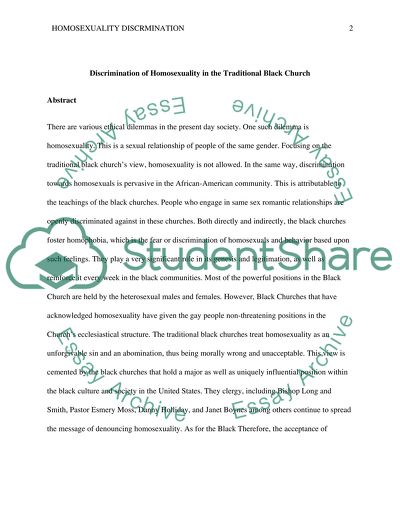Cite this document
(“Discrimination of homosexuality in the traditial black church Research Paper”, n.d.)
Retrieved from https://studentshare.org/psychology/1681288-discrimination-of-homosexuality-in-the-traditial-black-church
Retrieved from https://studentshare.org/psychology/1681288-discrimination-of-homosexuality-in-the-traditial-black-church
(Discrimination of Homosexuality in the Traditial Black Church Research Paper)
https://studentshare.org/psychology/1681288-discrimination-of-homosexuality-in-the-traditial-black-church.
https://studentshare.org/psychology/1681288-discrimination-of-homosexuality-in-the-traditial-black-church.
“Discrimination of Homosexuality in the Traditial Black Church Research Paper”, n.d. https://studentshare.org/psychology/1681288-discrimination-of-homosexuality-in-the-traditial-black-church.


